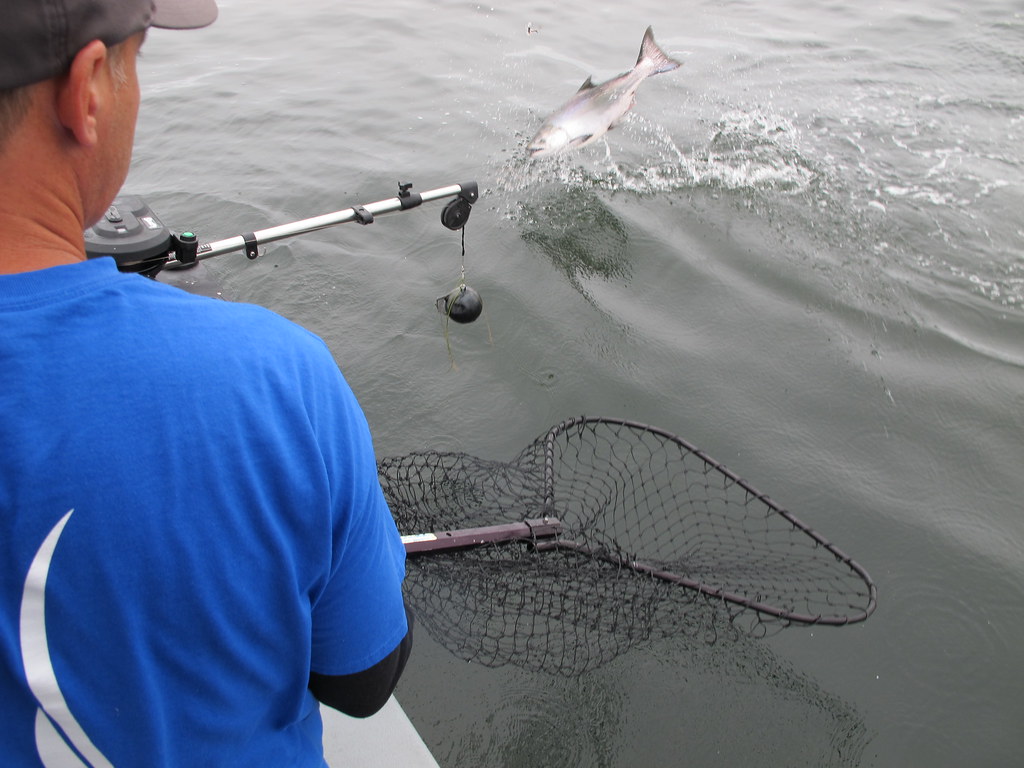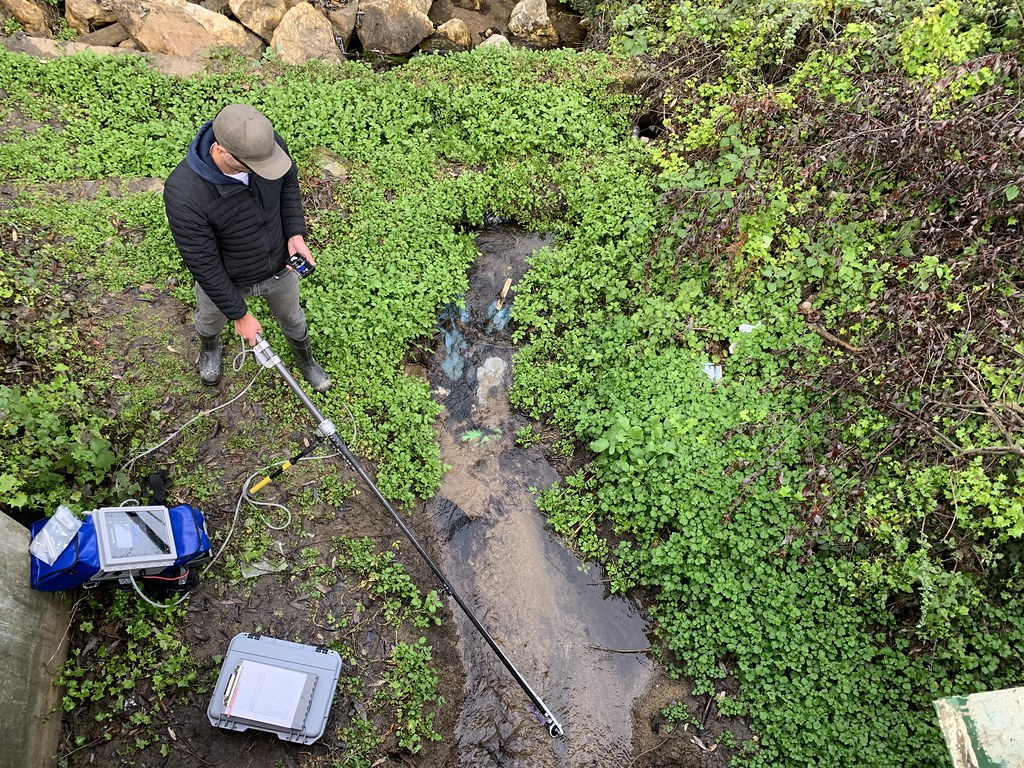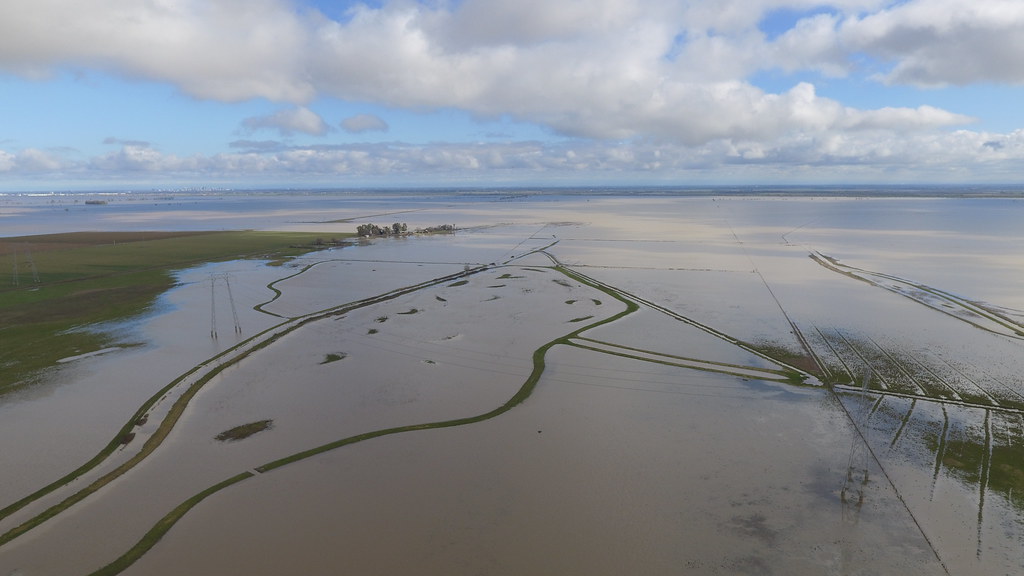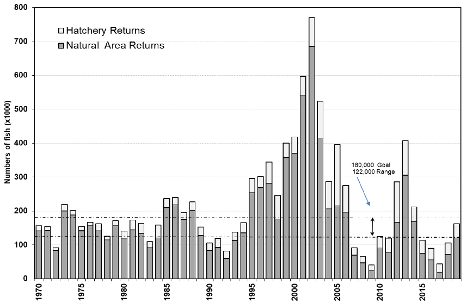Better than Expected: The 2019 Salmon Season

Photo Credit: Courtesy of FishBIo
by FISHBIO
5-11-2020
It’s time for our yearly review of the Pacific Fishery Management Council (PFMC) Review of Ocean Salmon Fisheries – and this year has a surprisingly positive twist. Each year, the PFMC publishes a report on the previous year’s salmon fisheries along the West Coast. The report details harvest totals and socioeconomic benefits for the California ocean salmon fishery, as well as escapement totals, or the number of salmon that “escaped” the fishery and returned to the Central Valley. The report also provides an opportunity to compare these numbers with the preseason prediction that was used to set harvest regulations for that year. Inaccurate preseason predictions can have severe consequences: an underestimation can impose unnecessary restrictions on the commercial fishery, while an overestimation can lead to reduced escapement and low numbers of fish available for in-river recreational fishing. In 12 of the last 15 years, PFMC predictions have overestimated the size of the population (Figure 1), which in some years has led to higher than expected harvest rates and fewer fish returning to Central Valley streams. However, in 2019, the actual salmon population was 33% higher than forecasted, which is the largest underestimation since 2002.
Results of the 2019 fishing season in California reveal a remarkable jump in both harvest and escapement totals for the Central Valley, likely reflecting better conditions resulting from two historically wet years in 2017 and 2019. In California, the PFMC report focuses primarily on fall-run Chinook salmon in the Sacramento River Basin, as this population contributes the majority of fish caught in the ocean fishery. The metric used to represent this abundance is the Sacramento Index (SI), which is the total number of adult fish (ages 3-5) projected to be available in the ocean that will either be harvested or will escape to spawn in natural areas and hatcheries in the Central Valley. The preseason forecast for 2019 was an expected SI of 379,632 fish, with a total projected spawning escapement (both hatchery and natural area) of 160,159 fish0, based on fishing regulations and quotas.
PFMC reported that the 2019 salmon season resulted in an actual SI of 505,535 fish, which is the highest total since 2013, and more than double the total from the year before. An estimated 162,532 fall-run Chinook salmon “escaped” the harvest and spawned in hatcheries and natural areas of the Sacramento River Basin in 2019, which is above the long-term management goal of 122,000 hatchery and natural area spawners, and a 54% increase over 2018 escapement (105,739; Figure 2). However, the stock remains “overfished” for the third consecutive year, which is determined based on the three-year average escapement totals from 2017–2019. Natural area spawners (120,394) exceeded that of hatchery returns (42,138), which is common in most years, but is sometimes reversed in low-escapement years such as 2017. (Figure 3). However, it is likely that hatchery-origin fish also comprise a large percentage of the natural-area spawners.
The larger number of salmon that returned in 2019 is encouraging and was likely influenced by high-flow conditions in 2017, when the majority of returning fish outmigrated to the ocean. This was evident in the San Joaquin River basin, which experienced its second highest escapement total for the last decade. In 2019, a total of 17,753 fall-run Chinook salmon returned to natural areas of the San Joaquin Basin and 9,459 salmon returned to Mokelumne and Merced River hatcheries, representing 12% of the total fall-run escapement to the Central Valley. The total San Joaquin Basin escapement of 27,212 fish was several thousand more than 2018 (23,512), but was less than 2017 (30,142), which was the highest recorded escapement since 2002, and contributed 27% to the total fall-run escapement in the Central Valley. Although the San Joaquin Basin has historically constituted less than 10% of the total Central Valley escapement, its contribution has exceeded 10% every year since 2014, with an average contribution of 18%. It is not clear why the proportion of escapement has been relatively high in the San Joaquin Basin over the past few years, but it may have returned to normal in 2019 because of increased escapement in the Sacramento Basin and a decrease in off-site hatchery releases following the drought.
The commercial fishery harvest in 2019 took a big jump from previous years, with landings revenues (coastwide exvessel value, or price received at the dock) of $17.2 million, which was more than double the prior year’s value of $7.2 million and the 2014–2018 average of $8.3 million (Figure 4). However, the value of the 2019 commercial salmon fishery was still 45% below the 1979–1990 inflation-adjusted average of $31.5 million (which include coho salmon landings during that period). The total 2019 catch of 271,697 was the highest since 2013, and represented a nearly 250% increase from the previous year and a nearly 200% increase from the 2014–2018 average of 90,943. Commercial fishing effort (boat days fished) more than doubled to 15,774 after remaining steady for three consecutive years. A total of 570 commercial vessels made salmon landings in California in 2019, which was the most since 2015. The average California exvessel price (i.e., price received at the dock) for troll caught Chinook salmon decreased from recent highs to $6.61 per pound, the lowest price since 2014. However, the total exvessel value of the commercial fishery was still the highest since 2013 due to increased harvest (Figure 4). With a dramatic jump in both escapement and harvest in 2019, anglers across the state are hoping that the upward trends continue in 2020. If preseason forecasts are correct, anglers will get their wish: the PFMC estimates there are 473,183 Sacramento River fall-run Chinook in the ocean this year, which is a 25% increase over last year’s projection (379,632). Let’s keep our fingers crossed that these predictions are met for a third consecutive year
FISHBIO is a dedicated group of research scientists, engineers, and technicians that specialize in counting, tracking, and analyzing trends in fish and wildlife populations throughout the world. An expert staff, technical capacity, and state-of-the-art equipment make FISHBIO a trailblazer in aquatic research. For more information, please visit FISHBIO.com
Photos
< Previous Report Next Report >
< Previous Report
Next Report >

5-4-2020
Hidden beneath the water’s surface in murky swamps, deep lakes, and rushing rivers, aquatic organisms are frequently entirely invisible to...... Read More

4-20-2020
Many environments are becoming increasingly fragmented by human development, but addressing this issue is more complicated than simply reconnecting all...... Read More
More Reports

5-4-2020
Hidden beneath the water’s surface in murky swamps, deep lakes, and rushing rivers, aquatic organisms are frequently entirely invisible to...... Read More

4-20-2020
Many environments are becoming increasingly fragmented by human development, but addressing this issue is more complicated than simply reconnecting all...... Read More
000





